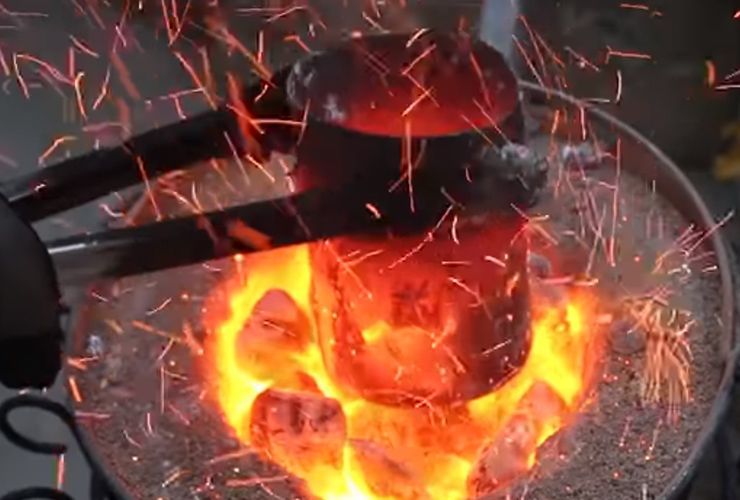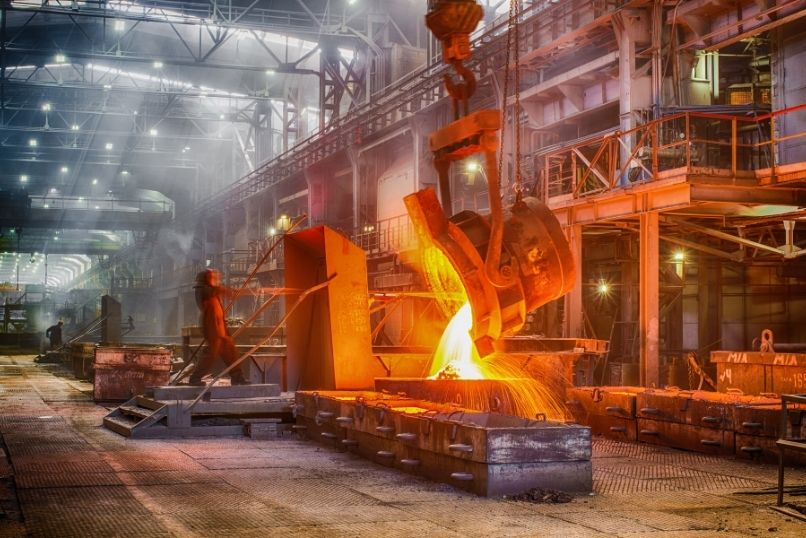A Comprehensive Guide to Metal Casting Techniques and Their Modern Applications
Wiki Article
Checking out the Art of Metal Casting: Techniques and Applications in Modern Foundries
Metal casting is a time-honored craft that integrates creativity with design precision. From ancient methods to modern-day improvements, this process has actually evolved substantially. Various methods, such as sand casting and lost-wax casting, display the convenience of the medium. On the other hand, advancements like 3D printing are reshaping exactly how foundries run. As the lines between capability and creativity blur, one have to think about how these growths effect both traditional methods and modern applications. What exists ahead in this progressing landscape?The Basics of Metal Casting
Metal casting, a pivotal process in production, involves putting molten steel right into a mold to accomplish a wanted shape. This strategy works as a structure in the manufacturing of complicated metal elements throughout numerous industries. Crucial element of metal casting include the option of products, which can range from light weight aluminum to steel, each chosen for its certain residential properties and application viability. The process starts with mold creation, which can be made from sand, metal, or ceramics, depending upon the casting method utilized. The molten metal is then meticulously poured right into the mold and mildew, where it strengthens and cools. Critical elements such as temperature level control, cooling down rate, and mold and mildew style significantly influence the final item's high quality and features. Additionally, comprehending the chemical and physical properties of the steel help in maximizing casting efficiency, inevitably boosting the performance of the manufacturing process and making sure top notch result tailored to particular needs.Conventional Casting Techniques
Traditional casting techniques encompass a selection of techniques that have stood the test of time, showing their effectiveness in producing detailed steel elements. One popular technique is sand casting, which employs a combination of sand and a bonding representative to produce molds. The versatility of sand casting permits the manufacturing of diverse forms, making it appropriate for both large-scale and small-scale production. Another notable strategy is investment casting, typically made use of for specific and intricate geometries. This technique entails developing a wax pattern that is coated in a ceramic covering, which is then heated to remove the wax, leaving a cavity for liquified metal. In addition, die casting is made use of for high-volume production, where molten steel is injected into multiple-use steel mold and mildews. Each of these conventional strategies stays pertinent, showcasing the craftsmanship and ability fundamental in the art of steel casting, while satisfying the needs of numerous markets.Modern Innovations in Metal Casting
As sectors develop, technologies in metal casting are reshaping manufacturing processes and improving performance. Advanced innovations such as 3D printing and computer-aided layout (CAD) are changing mold creation, permitting detailed designs that were previously unattainable. These approaches facilitate fast prototyping, lowering lead times and promoting creativity in product advancement.In addition, the integration of automation and robotics in factories is simplifying procedures, minimizing human error, and enhancing security. Smart sensing units and real-time tracking systems allow exact control of temperature level and product properties, ensuring higher quality results.
Moreover, sustainable methods are emerging, with the use of energy-efficient heating systems and recycled products, lowering ecological influence. The fostering of composite materials and sophisticated alloys is also expanding the opportunities of steel casting, causing more powerful and lighter parts. On the whole, these contemporary advancements are transforming steel casting right into a much more effective, exact, and ecologically responsible industry.
Applications Throughout Different Industries

While diverse markets increasingly count on steel casting, the strategy's adaptability plays a vital role in conference details application requirements. In the auto industry, steel casting is essential for producing engine components, transmission real estates, and this page various other elaborate parts that call for precision and resilience. The aerospace market gain from light-weight casted components, making certain both performance and gas performance. Additionally, the building sector utilizes metal casting for structural aspects, such as light beams and sustains, improving the integrity of buildings and bridges.
In addition, the power field employs metal casting for wind turbine blades and other considerable equipment that have to withstand extreme conditions. Medical tools additionally see applications of metal casting, particularly in surgical instruments and prosthetics, where accuracy is essential - Aluminum Casting. Overall, the adaptability and dependability of metal casting make it essential across numerous areas, adding to the innovation of modern technology and facilities in contemporary society
The Artistic Side of Metal Casting
Often connected with industrial applications, steel casting additionally finds its location in the domain name of art, where skilled artisans change liquified metal right into meaningful sculptures and complex designs. This artistic side of metal casting incorporates varied methods, including sand casting, lost-wax casting, and financial investment casting, each offering one-of-a-kind opportunities for creativity. Artists utilize these techniques to generate works that vary from abstract types to lifelike depictions, permitting for personal expression and discourse on contemporary concerns.
Regularly Asked Inquiries
What Safety Actions Are Essential in a Steel Casting Foundry?
Crucial precaution in a metal casting shop include personal safety devices, appropriate air flow, emergency situation protocols, training in taking care of liquified metals, regular devices upkeep, and clear interaction of threats to ensure worker safety and health and wellness. Aluminum Casting.How Do Environmental Regulations Influence Metal Casting Processes?
Environmental guidelines significantly affect metal casting processes by mandating the use of cleaner innovations, lowering discharges, and promoting waste management methods. Compliance typically needs financial investments in equipment, training, and modifications to existing procedures to minimize environmental impact.What Are the Typical Problems in Metal Spreadings?
Usual defects in metal spreadings include porosity, contraction, inclusions, and misruns. These problems can develop from inappropriate mold layout, inadequate temperature control, or contamination, eventually influencing the architectural stability and general high quality of the end product.How Is Waste Managed Throughout Metal Casting Production?
Waste monitoring in steel casting manufacturing includes reusing scrap steel, executing effective product use, and making use of advanced modern technologies to decrease waste. Shops adopt practices like sand reclamation and appropriate disposal techniques to lower ecological influence.What Job Opportunities Exist in the Metal Casting Sector?
The metal casting market provides diverse profession opportunities, including functions such as factory manager, metallurgical engineer, top quality control inspector, pattern maker, and production manager, accommodating numerous ability sets and competence in manufacturing procedures.Metal casting, a crucial process in production, includes putting liquified steel into a mold and mildew to accomplish a preferred shape. visit our website Additionally, die casting is made use of for high-volume production, where molten steel is infused right into recyclable metal mold and mildews. While diverse industries increasingly rely on steel casting, the technique's versatility plays a crucial role in meeting specific application demands. Frequently associated with industrial applications, steel casting likewise locates its area in the domain name of art, where proficient artisans change molten steel into intricate styles and expressive sculptures. Waste management in steel casting production entails recycling scrap steel, carrying out effective product usage, and making use of sophisticated technologies to decrease waste.
Report this wiki page